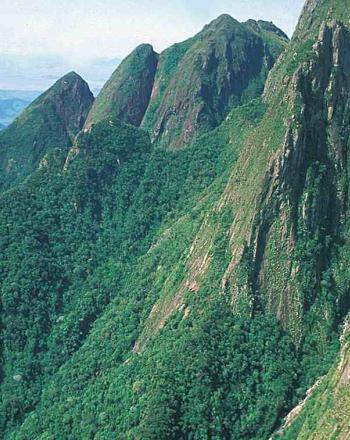Main menu
CEPF is a joint initiative of l’Agence Française de Développement, Conservation International, the European Union, Fondation Hans Wilsdorf, the Global Environment Facility, the Government of Japan and the World Bank.
Visitez le site français コア情報の日本語翻訳を読むOr use Google Translate to translate the English site to your language:
GTranslate
Priority KBA
Priority Corridor
Other KBA
Other Corridor
Atlantic Forest
Previously invested
Investment
2002 to 2011
US$10.4 million
Ecosystem Profile
Ecosystem Profile, 2001
Stats
CEPF Strategy Strategy
About this hotspot About
Investment
Dates:
2002 to 2011
Amount:
US$10.4 million
Eligible Countries
Ecosystem Profile
Over 10 years, CEPF’s impact in the Atlantic Forest was broad and deep. We contributed to a major increase in knowledge about 94 fauna and flora species and the measures necessary for their conservation. This led to baseline data, lists of threatened species, further study on the values provided by species and habitats, and inter‐agency cooperation.
Grants awarded by CEPF led to the creation of 200 private reserves and, between public and private land, CEPF put more than 100,000 hectares into newly created or expanded protected areas.
The typical CEPF grantee engaged between three or four partners to conduct its work, whether those partners were other nonprofit organizations, community groups or public agencies. In total, CEPF may have had an impact on between 500 and 600 organizations and brought them into the broader conservation network. This impact will continue for many years to come.
The Atlantic Forest stretches along Brazil's Atlantic coast, from the northern state of Rio Grande do Norte south to Rio Grande do Sul. It extends inland to eastern Paraguay and the province of Misiones in northeastern Argentina, and narrowly along the coast into Uruguay. Also included in this hotspot is the offshore archipelago of Fernando de Noronha and several other islands off the Brazilian coast.
Long isolated from other major rainforest blocks in South America, the Atlantic Forest has an extremely diverse and unique mix of vegetation and forest types. The two main ecoregions in the hotspot are the coastal Atlantic Forest, the narrow strip of about 50–100 kilometers along the coast, which covers about 20 percent of the region. The second main ecoregion, the interior Atlantic Forest, stretches across the foothills of the Serra do Mar into southern Brazil, Paraguay and Argentina. Some 20,000 plant species, 40 percent of which are endemic, are found here, as are about 950 bird species.





